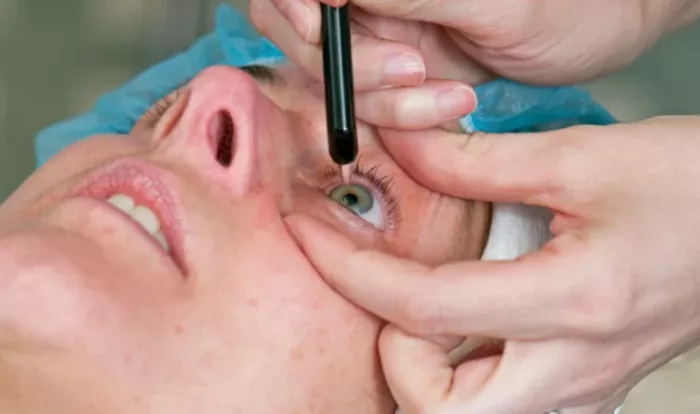Photorefractive Keratectomy (PRK) is a type of laser eye surgery used to correct vision problems such as nearsightedness, farsightedness, and astigmatism. While it has been around longer than LASIK, PRK is still commonly used today, especially for patients with thin corneas or certain eye conditions that make LASIK less suitable. One of the most common concerns people have about PRK is the level of pain involved. In this article, we will explore how painful PRK eye surgery is, what causes the discomfort, how long it lasts, and how to manage it effectively.
What Happens During PRK Surgery?
To understand the pain level of PRK, it’s important to know what the procedure involves. During PRK, the outer layer of the cornea, called the epithelium, is removed. This allows the laser to reshape the underlying corneal tissue and correct the refractive error.
The surgery is done while the patient is awake. Numbing eye drops are used so you don’t feel pain during the procedure. You may feel a bit of pressure or see bright lights, but the surgery itself usually takes less than 10 minutes per eye. Once the laser work is done, a soft contact lens is placed over the eye to protect the surface while it heals.
Is PRK Surgery Painful?
The actual surgery is not painful due to the numbing drops. However, the discomfort begins a few hours after the procedure. Once the numbing effects wear off, patients often experience varying levels of discomfort.
Some describe it as a gritty or burning sensation, similar to having sand in the eye. Others may feel soreness or sensitivity to light. It’s important to note that pain perception is different for each person. Some feel only mild irritation, while others find the pain more intense.
Why Does PRK Cause More Discomfort Than LASIK?
PRK is generally considered to be more uncomfortable than LASIK. The main reason is that in LASIK, a flap is created in the cornea, and the surface layer is mostly preserved. In PRK, the outer layer is completely removed and must regrow over several days.
This healing process is what causes most of the pain. The nerves in the cornea are exposed until the epithelium heals, leading to increased sensitivity. The healing process takes about three to five days, and the pain usually peaks within the first 48 to 72 hours.
What Does the Pain Feel Like?
Patients often report a combination of the following sensations:
- Burning or stinging
- Gritty feeling, like sand or dirt in the eye
- Watery eyes
- Blurry vision
- Light sensitivity
- Mild to moderate throbbing
These symptoms can vary from person to person. Some people only experience mild discomfort, while others may need prescription pain medication.
How Long Does the Pain Last?
The most intense discomfort usually occurs in the first two to three days after surgery. By day four or five, most patients start to feel better as the surface of the eye begins to heal. Some lingering dryness or mild irritation may continue for a few weeks, but this is typically manageable.
The healing of the epithelium is a key part of recovery. Once the surface cells grow back and cover the cornea, the pain significantly decreases. The protective contact lens is usually removed around the fourth or fifth day, which also helps improve comfort.
How Is PRK Pain Managed?
Doctors use several strategies to help manage pain after PRK:
1. Pain Relieving Eye Drops
Prescription eye drops can help reduce inflammation and pain. These are often given along with antibiotic drops to prevent infection.
2. Oral Pain Medication
Over-the-counter pain relievers like ibuprofen or acetaminophen can be used to control pain. In some cases, doctors may prescribe stronger medication if needed.
3. Cold Compresses
Applying a cold compress gently over closed eyes can help soothe irritation and reduce swelling.
4. Rest and Darkness
Resting in a dark or dim room can help reduce sensitivity to light. Avoiding screens and bright lights can also ease discomfort.
5. Lubricating Eye Drops
Artificial tears or lubricating eye drops can help keep the eyes moist and comfortable during the healing process.
What Can You Do To Prepare for PRK Pain?
Being mentally prepared for the recovery process can make a big difference. Here are a few tips:
- Arrange for time off work or school for at least one week.
- Stock up on medications and eye drops before surgery.
- Prepare a comfortable, dark place to rest during the first few days.
- Avoid activities that strain the eyes, such as reading, watching TV, or using a computer.
When Should You Call Your Doctor?
While some pain is expected, there are signs that may indicate a problem:
- Severe or increasing pain that doesn’t improve
- Sudden vision loss or major changes in vision
- Excessive redness or discharge
If you experience any of these symptoms, contact your eye doctor right away.
Final Thoughts
PRK eye surgery is not painless, but the discomfort is temporary and manageable. Understanding what to expect and following your doctor’s instructions can help make the recovery smoother. With patience and proper care, most people find the short-term discomfort well worth the long-term gain of clearer vision.
Related topics:
Can Eye Surgery Correct Astigmatism? All You Need to Know
Can You Drive After Having Laser Eye Surgery? A Complete Guide
What Is PTK Eye Surgery? A Clear Guide


